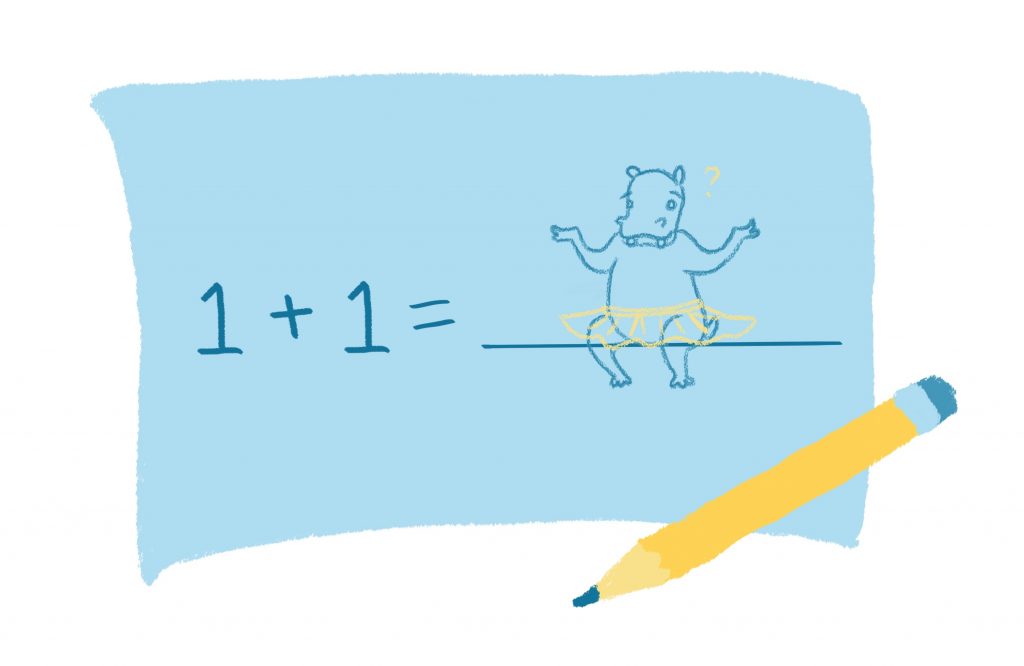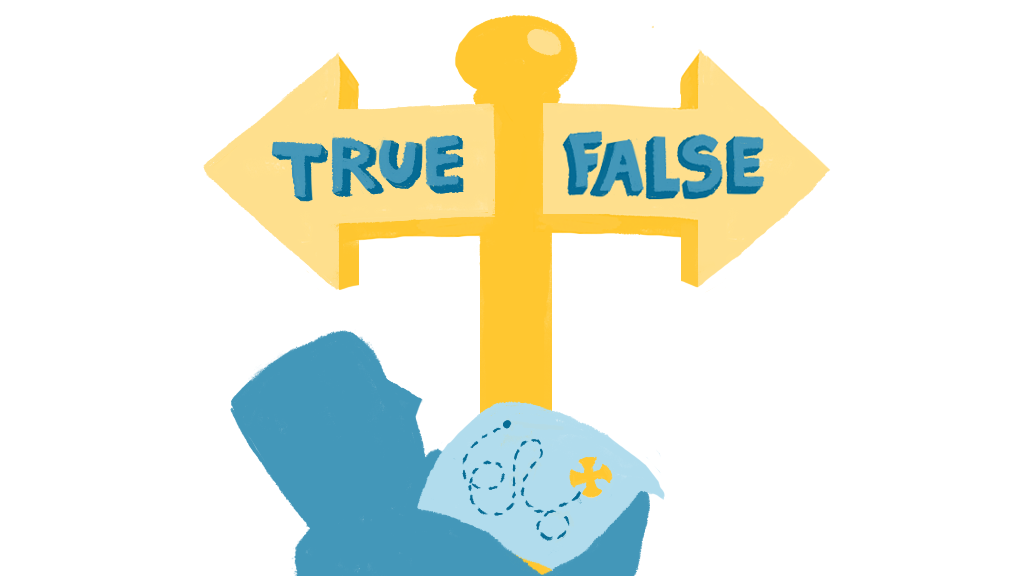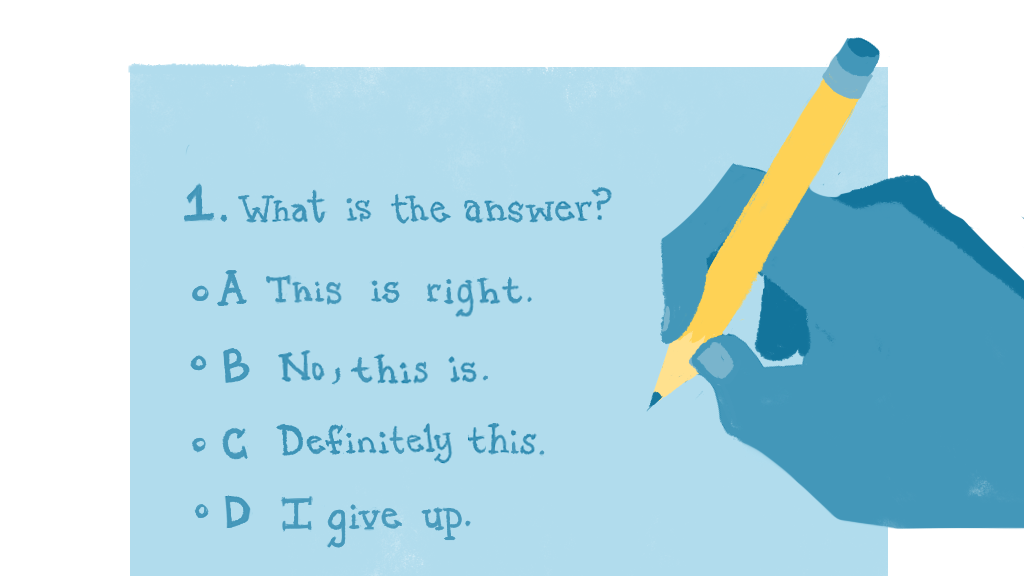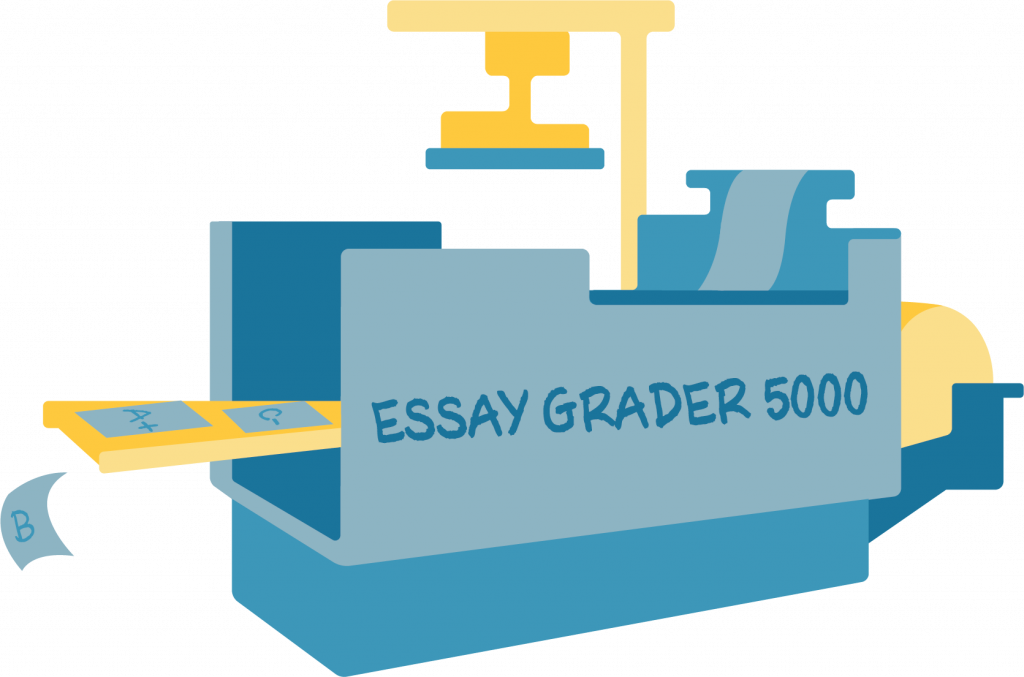FILL-IN-THE-BLANK QUESTIONS
 Fill-in-the-blank questions are fundamentally different from multiple choice questions in that the examinee provides his or her own answer. This advantages and disadvantages of this question type spring from this essential feature, because coming up with something by yourself is fundamentally different from choosing one of the options that the test creator provides.
Fill-in-the-blank questions are fundamentally different from multiple choice questions in that the examinee provides his or her own answer. This advantages and disadvantages of this question type spring from this essential feature, because coming up with something by yourself is fundamentally different from choosing one of the options that the test creator provides. TRUE/FALSE QUESTIONS
 True/false questions are really multiple choice questions with two answers: true and false. They tend to get used in low-stakes assessments, to generate class discussion, or because sometimes learning designers want to include questions that are easier to answer. However, they tend not to be used in high-stakes assessment, for these reasons:
True/false questions are really multiple choice questions with two answers: true and false. They tend to get used in low-stakes assessments, to generate class discussion, or because sometimes learning designers want to include questions that are easier to answer. However, they tend not to be used in high-stakes assessment, for these reasons: MATCHING, SORTING, AND SEQUENCING
 Matching, sorting, and sequencing are worth considering together, because they share the same advantages and disadvantages. Essentially, they are all good item types when used appropriately, but they aren't appropriate in every context.
Matching, sorting, and sequencing are worth considering together, because they share the same advantages and disadvantages. Essentially, they are all good item types when used appropriately, but they aren't appropriate in every context. MULTIPLE CHOICE QUESTIONS
 By some measures, multiple choice questions are the most popular question type in assessment.They show up everywhere, across disciplines, across ages, in traditional education, in the business world, in certification exams and seemingly everywhere you look. Multiple choice questions aren’t popular with everyone, though. Students typically have a less positive view of them, and they’re subject to criticism from educators, instructional designers and other avenues.
By some measures, multiple choice questions are the most popular question type in assessment.They show up everywhere, across disciplines, across ages, in traditional education, in the business world, in certification exams and seemingly everywhere you look. Multiple choice questions aren’t popular with everyone, though. Students typically have a less positive view of them, and they’re subject to criticism from educators, instructional designers and other avenues. WRITING TASKS
 The case for including writing tasks in an assessment strategy has some very powerful arguments on its side. For starters, writing is itself a fundamental skill that is important in a wide variety of settings. Written communication is required for virtually every role in the modern economy, and so it makes sense to want to know whether students, colleagues, and job applicants can write effectively.
The case for including writing tasks in an assessment strategy has some very powerful arguments on its side. For starters, writing is itself a fundamental skill that is important in a wide variety of settings. Written communication is required for virtually every role in the modern economy, and so it makes sense to want to know whether students, colleagues, and job applicants can write effectively. 